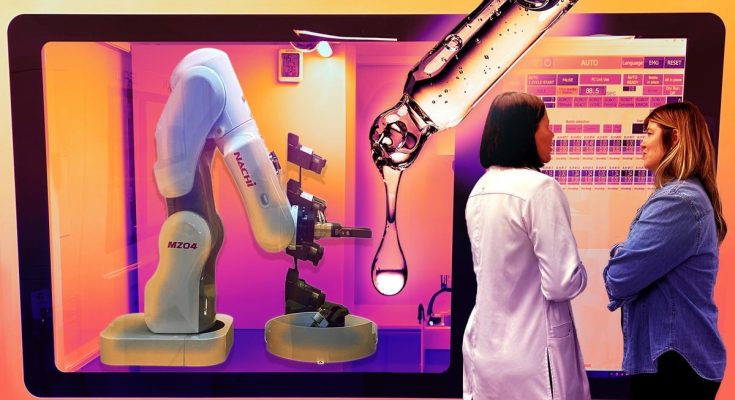In the relentless march of robotic innovation, the pursuit of machines that can interact with the world as deftly and sensitively as humans has long been a paramount goal. While advancements in articulation, vision systems, and artificial intelligence have yielded increasingly sophisticated robots, a critical missing piece has been a truly human-like sense of touch. This is precisely the void that “smart skin” aims to fill, fundamentally transforming the capabilities of robots by enabling them to perceive and respond to physical contact, temperature, pressure, and even texture. Exploring the integration of smart skin into robotics opens up a realm of possibilities, pushing the boundaries of what robots can achieve and how seamlessly they can operate alongside humans in diverse environments.
At its essence, smart skin, also known as electronic skin or e-skin, refers to flexible, stretchable electronic sensor arrays designed to mimic the sensory functions of human skin. Unlike traditional rigid sensors, smart skin can conform to irregular surfaces, such as a robotic gripper or an entire humanoid arm, allowing for widespread tactile coverage. These arrays are typically composed of various micro-sensors that detect a range of physical stimuli. Pressure sensors, for example, can determine the force of a grip, while temperature sensors can detect heat or cold. Strain sensors can measure deformation, mimicking our ability to feel stretching, and some advanced versions even incorporate chemical sensors for environmental detection. The data from these sensors is then transmitted and processed, providing the robot’s control system with an unprecedented level of tactile feedback, akin to how our brains interpret signals from our own skin.
One of the most immediate and profound impacts of smart skin is on **robotic manipulation and grasping**. Traditional robots often rely heavily on visual cues and pre-programmed movements, leading to a “clumsy” or forceful interaction with objects. Without tactile feedback, a robot might crush a delicate item or drop a slippery one. Smart skin provides the nuanced data necessary for adaptive grasping. Imagine a robotic arm tasked with picking up a fragile glass goblet and then a robust metal block. With smart skin, the robot can feel the precise pressure it’s applying, adjust its grip strength in real-time to avoid damage, and even sense the texture to prevent slippage. This level of dexterity and gentleness is crucial for handling variable objects in logistics, manufacturing, and even delicate surgical procedures, opening up entirely new applications for automation in industries where precise handling is critical.
Beyond mere grasping, smart skin dramatically enhances **human-robot collaboration and safety**. In environments where robots work alongside humans, such as in “cobot” (collaborative robot) settings, accidental collisions can pose a significant risk. Equipping robots with smart skin allows them to “feel” accidental contact with a human, even a light brush, enabling immediate and safe reactions like slowing down or stopping. This sensitivity moves beyond relying solely on vision systems, which can be fooled by lighting or obstructed views, adding an extra layer of safety and fostering greater trust between humans and their robotic counterparts. This is particularly relevant in Germany, where workplace safety regulations are stringent and the integration of cobots in manufacturing is rapidly increasing. A robot with smart skin that can detect a human presence through touch, even before a vision system fully processes it, adds an invaluable layer of protection.
Furthermore, smart skin plays a vital role in **robot navigation and interaction with unstructured environments**. Our sense of touch provides crucial information about our surroundings – the slipperiness of a floor, the firmness of a surface, or the texture of a wall. By integrating smart skin onto their bodies, mobile robots can gain similar perceptive capabilities. A robot navigating a cluttered room could use tactile feedback to “feel” its way around obstacles, sensing surfaces and avoiding collisions more effectively than with visual sensors alone. This is particularly useful in low-light conditions, dusty environments, or scenarios where visual information is limited. For exploration robots in hazardous or unknown terrains, smart skin can provide vital data about ground conditions, helping them maintain balance and traction.
The development of smart skin also pushes the boundaries of **humanoid robotics and prosthetic limbs**. For humanoid robots designed to operate in human-centric environments, a comprehensive sense of touch is essential for natural interaction and manipulation. When a humanoid robot shakes a human hand, smart skin can provide the feedback needed to apply appropriate pressure, making the interaction feel more natural and less awkward. In prosthetics, integrating smart skin with advanced tactile sensors can provide amputees with a more intuitive and responsive sense of touch, allowing them to feel the texture, temperature, and pressure of objects they grasp, significantly improving the functionality and user experience of artificial limbs. This research is actively being pursued in research institutions across Germany, seeking to integrate highly sensitive and flexible sensor arrays into prosthetic designs.
While the potential of smart skin is immense, challenges remain. These include improving the durability and longevity of flexible electronic sensors, reducing manufacturing costs for large-scale deployment, and developing sophisticated algorithms to process and interpret the vast amounts of tactile data in real-time. Power consumption for active smart skin systems also needs to be optimized. However, with ongoing advancements in materials science, nanotechnology, and AI, these hurdles are steadily being overcome. The future of robotics will undoubtedly be one where machines are not just strong and intelligent, but also exquisitely sensitive, thanks to the revolutionary role of smart skin.



